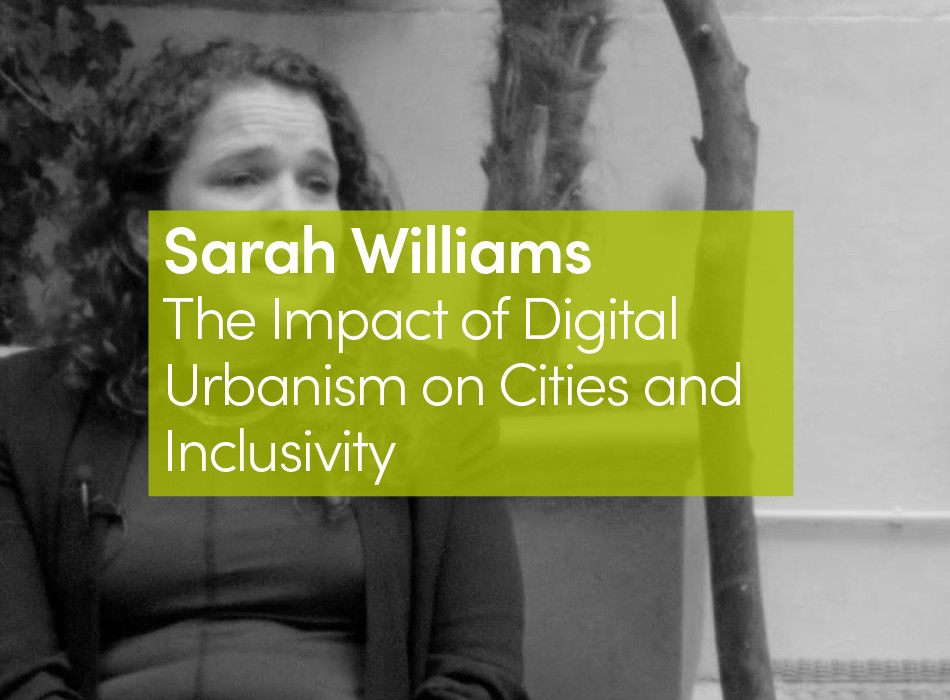The purpose of this paper is to explore a number of recent geographical studies of modernization of Africa with regard to their potential applications in the Latin American context, particularly in the field of political geography. An African specialist, I am extremely sensitive to colonialism and territorial invasion, especially when there exists a gap in emotional attachment and substantive knowledge of the local area between the colonizer and the colonized. It is therefore with some hesitation that I embark upon an excursion through the Latin American domain which draws the present volume together. As a geographer concerned with the political organization of space, however, I feel less hesitant to shift regional contexts, for the growth of systematically organized cross-cultural comparative studies may be what is needed for political geography to emerge from its cocoon and play a significant role in contemporary geographical analysis.
To someone usually labeled a political geographer, the opportunity to participate anywhere in a discussion of “neglected fields” is therefore particularly appropriate and intellectually appealing.
The geography of modernization
Human geography as I view it is concerned primarily with the spatial organization and behavior of society. Two of the most pervasive trends in contemporary geographical research reflect this central focus (albeit somewhat peripherally on occasion) in their attempts to develop techniques and scaling procedures for the description and measurement of the more abstract properties of spatial organization and spatial behavior. The work of Michael Dacey, for example, in the analysis of point processes in the plane and the development of two dimensional languages is representative of a distinctive “geometric” emphasis within the discipline (King, 1969). A second major trend is discernable in the very recent upsurge of interest in space perception, mental maps, and both individual and group behavior in space which illustrates the growing behavioral approach to geographical problems (Saarinen, 1969; Cox and Golledge, 1969). While there is no reason to preclude these groundbreaking approaches from application in the regional context, Latin American or African, it is probably inappropriate to treat these subjects here. What is most necessary perhaps is for all geographers, particularly those working in non-Western areas, to become aware of these general developments, something which is too rare among traditional regional geographers, if only to guarantee that whatever generalizations emerge are not culturally specific or rooted in ethnocentrism. This is particularly relevant with respect to behavioral studies.
A third trend which has begun to gather momentum in recent years is much more central to our interests here and will provide the major focus for the remainder of this paper. This is the study of the evolution, or development, or modernization of society in its spatial dimension. Rather than quibbling with the precise meaning of these terms or trying to sidestep improper connotations of “progress” or directionality, let me simply offer the label “geography of modernization” and describe specifically what is meant by this term.
The geography of modernization is firmly rooted in the contention that space both affects and reflects the basic processes which operate within human
societies. It is therefore possible to analyze societal changes either with respect to the impact of such geographical variables as location, distance, connectivity, direction and focality on societal processes, or to examine the ways in which change or modernization is expressed in the organization of space and in patterns of human behavior in space.
Most of the work done under the heading of what I call the geography of modernization has emphasized economics and planning and a good portion of it
is associated with the writings of John Friedmann, a Latin American specialist with whom you are all probably familiar (Friedmann, 1966 and 1967). Friedmann has been concerned for many years with the formulation of a theory of the development process in its spatial dimension. In a recent paper, Friedmann clearly mirrors the description of the geography of modernization offered above and also extends his discussion well beyond its economic aspects. Society is spatially organized in the sense that human activities and social interactions are space-forming as well as space-contingent. It follows that as a society undergoes development, its spatial structure will be transformed, but the development process will also be influenced by the existing patterns of spatial relation and the dynamic tensions that result from them. …In order to state a spatial theory of the development process, therefore, it is necessary to establish a linkage between the separate but correlative theories of social change and spatial organization. (Friedmann, 1969). Friedmann then proceeds to develop a series of testable postulates which involve political, social and psychological as well as more purely economic variables in what he calls “A Generalized Theory of Polarized Development.” Some of the political postulates provide an excellent blueprint for future research in any of the developing countries, particularly those concerned with political competition between the core and periphery, the sources of internal conflict, the relative effectiveness of monocentric versus polycentric political systems and the political economy of regional planning. Indeed, the whole planning process has become an essentially political phenomenon and cannot be viewed simply with respect to rational economic strategies for incremental growth. Overriding many of the problems of developing countries is the geographically uneven pattern of modernization, with very few areas accounting for an overwhelming share of the modern sector. Much of this unevenness is an inevitable part of the development process, but in the developing countries probably more so than in the developed areas, its implications have been translated directly into the competitive arena of national politics. Planners are therefore constantly faced with achieving some kind of balance between a development strategy based upon existing structural inequalities, which may offer the most rapid path to economic growth, or a policy aimed at a greater equalization of investment and development, which may be essential to maintain political stability and order. This is perhaps the quintessential problem in regional economic planning. It is therefore imperative to deal with the political aspects of planning and to understand and interpret the geographical variations of modernization and the system of regional inequalities upon which it is so heavily based. The works of Friedmann and the handful of other Latin American geographers and economists concerned with the spatial aspects of the development process (Slater, 1908) will undoubtedly be reexamined in other papers. My purpose here is to review briefly some of the contributions of geographers to this subject in Africa in the hope of stimulating a cross-fertilization of ideas and approaches between two sets of regional specialists.
Studies of the geography of modernization in Africa can be broadly categorized into two major groups. The first consists of macro-geographical analyses of the growth of space-organizing systems (transport, communications, administration, urban) which functionally articulate rural and urban areas and shape the formation of modernization surfaces. The second stresses what might be called spatial integration or the degree to which cores and periphery are enmeshed in a framework of mutually relevant behavior, functional interdependence and cooperative activity. This approach, less extensively examined than the first, tends to be more behavioral and less historical but complements, indeed derives from, the analysis of modernization surfaces (Soja, 1969a).
Modernization surfaces
The contemporary geography of modernization in Africa has been shaped primarily by the imposition of a Western system of social, economic and political
organization over a mosaic of predominantly small scale traditional societies. More powerfully affected by the traditional base than in most of Latin America, the new system in nearly all cases expanded the scale of traditional society and restructured the patterns of social and spatial interaction to fit the superimposed mesh of colonial boundaries. It also initiated a process of articulation, adjustment and spatial selection which produced the geographically uneven patterns of social change, economic development and political participation which predominate in the new states of Africa.
In my study of Kenya (Soja, 1968a), the present modernization surface — depicting the pattern of areal variations in levels of social, economic and political development — was identified through the use of components analysis and examined historically using more traditional cartographic and statistical techniques. The following summarizes some of the study’s major findings: “The contemporary spatial patterns of modernization in Kenya are largely the products of the attitudes and objectives of the former colonial power and the resident European minority. It will take many years before these patterns cease to reflect the functions and requirements of a colonial territory and become restructured to serve an independent African government attempting to construct a cohesive national community within its territorial boundaries ….”
The imprint of colonial penetration and the establishment of effective administrative control temporarily froze the pre-European cultural geography,
and Kenya was compartmentalized into a series of European and African “reserves.” The requirements of the colonizers, however, demanded chat this new system not be airtight. The construction of roads and railways, the growth of towns, the introduction of a money economy and taxation, the spread of
education, and a number of other forces acted to draw the African out from his traditional social matrix into a new network of social communications much
broader and more powerful in terms of the demands put upon him than any other he had encountered before.
The forces of transition were thus channeled through a superimposed system of circulation and administration which reflected the designs of the colonizing
power. Attention was focused on the White Highlands and other areas where Europeans were concentrated, while the coast (outside of Mombasa) and similarly peripheral areas were largely ignored. At the same time, however, development in the White Highlands and urban centers had a “lift-pump” effect on the surrounding African reserves, leading to the emergence of two distinct but articulated subsystems which controlled the growth of diffusion of modernization throughout Kenya.
The impact of modernization was therefore highly uneven. Traditional social and economic organization, pre-European patterns of migration and, perhaps most importantly, geographical proximity and accessibility to the major nodes and flow lines within the new circulatory system affected the degree to which various peoples of Kenya were exposed to and transformed by the processes of change. Some, like the Kikuyu, changed rapidly, while others remained almost totally bound by tradition. Modernization thus created a new kind of social gap that was in many ways greater than that which existed prior to European contact. (Soja, 1968a).
The modernization surface in Kenya was interpreted with respect to the patterns of spatial dualism (political as well as economic), the growth of political parties and national elites, and the general problems of national political integration. A more dynamic and spatial approach to the geography of modernization is illustrated in a recent study of Sierra Leone by Riddell (1970), which uses the technique of trend surface analysis to identify the major regional trends in the development of a modernization surface. Riddell’s results clearly show the interplay between a “contagious” diffusion process radiating outward from the core area of Freetown and displaying typical distance-decay characteristics, and a hierarchical diffusion cascading down through the urban-administrative system from the highest order centers. Through an analysis of diffusion and the evolving structure of the communications and transport network, Riddell perceptively describes the forces underlying the morphology of the contemporary modernization surface of Sierra Leone.
Riddell also suggests a broad organizational framework potentially useful in all studies of modernization in its geographical context. The framework is reflected in the subtitle of his book, “Structure, Diffusion and Response,” and closely parallels in part the analysis of transport growth in developing countries suggested by Taaffe, Morrill and Gould (1964). The urban, administrative and transport systems are viewed as providing the structure through which modernization diffuses and becomes concentrated. Emerging from this diffusion process are a series of behavioral responses — rural to urban migration, the interaction between core and periphery, changing political participation, internal competition and conflict — which lie at the heart of contemporary problems of nation-building. Another important contribution to the geography of modernization has been made by Peter Gould (1970), whose earlier works (1960; 1964) have been influential in the growth of this approach to geographical analysis. Through a series of components analyses based upon an hexagonal grid of nearly 300 cells, Gould maps the modernization surface in Tanzania in five time slices from the early 1920’s to the early 1960’s. Perhaps more than anything else, Gould’s study strikingly depicts the degree to which insightful spatial analysis of the modernization process can be conducted under apparently severe data restrictions. The use of a grid system for data collection permits the exploitation of that oddly ignored storehouse of geographical data, the map. Several of the variables used by Gould were taken directly from old maps and were therefore not dependent upon often unavailable statistical handbooks and other published data sources.
The methods used in this study, because of their relative simplicity and important conceptual contributions, should provide an excellent model for reapplication in other countries. It might prove particularly fruitful in Latin America, in part because of its greater depth of historical data but even more so with respect to the distinctive contributions such studies can make to other developing countries. One of the major features some African planners and social scientists at least attribute to the process of modernization in Latin America is the progressive rigidification of regional inequalities to the point that greater equalization of development appears unlikely short of wholesale revolution. An evaluation and measurement of this process as it has evolved over time and space — or indeed an effective refutation of its existence — would therefore represent a most welcome addition to the geographical literature on modernization.
Some of Gould’s closing remarks succinctly summarize one of the major focuses of geographical studies of modernization: “(What) we have seen emerging in the space called Tanzania between 1920 and 1963, and underlying the very modernization process we have tried to measure and structure, are the dynamics of that most spatial of systems — the central space structure; a system of nodes of various – sizes, at differing distances, linked with varying intensities, influencing areas contiguous and between, structuring, focusing, and serving their hinterlands, and acting as emergent poles of attraction for the surrounding population. …And so, underlying any theory of modernization in space and time, there must be a deeper theory of the dynamics of central-place systems.” (Gould, 1970).
Gould identifies one of the major research frontiers in the geographical analysis of modernization: the development of a dynamic central place theory capable of explaining the kaleidoscopic restructuring of space generated by the forces of societal change. Nearly all the modernization studies conducted thus far in Africa have been exploratory regional analyses which have identified but rarely examined intensively the major dimensions of the modernization process in space. What is essential now are more detailed and systematic examinations of these specific dimensions: the structural properties and diffusion of transport networks (for a Latin American example, see Gauthier, 1968); the characteristics of urban systems (Safier, 1967; Mabogunje, 1965 and 1969); the development of local marketing systems and their link-up with the lower levels of the central place hierarchy; the implications of urban primacy in regional systems; the patterning of administrative organization and efficiency; the dynamics of migration; and the role of perception.
Spatial integration
Whereas the study of modernization surfaces represents a primarily areal emphasis in the geography of modernization, a more spatial approach is inherent
in the analysis of the framework of interaction which structures and integrates the modernization surface. Societal integration, like development in general, is both space-forming and space-contingent. At the national level, it is a major component of the modernization process and directly reflects the degree to which a cohesive and interdependent system of social, economic, and political behavior has emerged under the impact of change.
Development concentration, for example, is virtually universal. The major differences between developed and developing countries lie less in the intensity of
concentration (although this has yet to be empirically tested) than in the degree to which the core areas have become focal points in a wider web of relationship and interaction embracing the bulk of the population. It thus becomes important not only to discover the ways in which the areal system is differentiated but also the pattern and structure of interaction among its component parts. Except for some studies focusing on the urban system as a mechanism for the economic integration of space (McNulty, 1969; Grove and Huszar, 1964), there have been relatively few examinations explicitly concerned with the analysis of spatial integration. In large part, this has been due to the scarcity of accurate origin-destination data systematically collected for an entire country. The analysis of national integration in its spatial context depends upon interactional data, and one of the major contributions geographers can make is to urge that these data comprehensive traffic flow surveys, telephone and postal data censuses, trade flow information be collected and published in the developing countries. Because of its remarkable “geographical” detail and very widespread availability, data on telecommunications provide one of the best sources of origin-destination data. Telephone traffic statistics detailing the flow of calls from place to place throughout an entire country are essential to planning telecommunications development. From my experience in Africa, even the most statistics-poor country has accurate telephone traffic counts over a period of years. Recognizing the limitations of such data with respect to their use as indicators of spatial integration, I and some graduate students at Northwestern have been experimenting with a series of telephone trunk call censuses in East Africa in an attempt to develop quantitative measures of the structure and intensity of spatial integration both within and between the three East African countries (Soja, 1968b and 1969b; Anderson, 1969). Some of the techniques used include transaction flow analysis, components analysis and the gravity model. Although not entirely
successful, the results thus far do suggest many promising avenues for future research which could very easily be exploited in the Latin American context.
The application of these techniques provides an excellent basis for examining territorial integration at a variety of scales in addition to the national level. The work of the political scientist Bruce Russett on the delineation of international regions (1967), for example, illustrates quite clearly some of the stimulating results obtainable through the use of components analysis of interaction data in the identification of international regional systems. His findings on “Latin America” are particularly relevant here, highlighting as they do the complex texture of regional interaction: the changing composition of the Central American trading group; the distinctive marginality to the two major regional subsystems (Central and South American) of Haiti, Argentina, Uruguay, Chile, Puerto Rico and Cuba; the “closeness” of the Iberian mother countries; the tightly knit group of states in the old area of Grand Colombia; the rapid decline of intra-regional trade relative to other major world regions. Similar studies are needed in both Africa and Latin America to provide greater detail and interpretation of the patterns of interstate linkage, particularly as this relates to the potential for regional economic or political federation.
At more local levels, important contributions can be made in the intra-urban context, especially with respect to adding an interactional component to the
generally static descriptions of social areas within the city associated with the approach of factorial ecology. Further study is also needed of individual and
group perceptions of the national space. For example, how do people perceive the modernization surface of their country? How may these perceptions affect
patterns of internal migration? What images of the national space can be identified through a content analysis of local newspapers and other media? The administrative organization of space is still another area which has only begun to be investigated. Can we develop methods, for example, which assign
administrative centers and draw administrative boundaries so as to maximize efficiency of operation and accessibility to the bulk of the population? (For an
interesting attempt along these lines, see Goodchild and Massam, 1968). Are there ways of measuring the degree of centralization or decentralization within an administrative system through an analysis of flow patterns in space? Can administrative reorganization be used to promote national unity by helping to
break down powerful regionalism or sectionalism?
Conclusion
This paper has been designed to suggest some possible approaches to geographical analysis in Latin America derived from recent research in Africa. The
questions and themes it offers are fundamentally geographical and related to a larger set of questions and problems facing all developing countries. It is part of our obligation as regional specialists to contribute toward the solution of these problems in those countries we so willingly exploit for our own narrow academic and psychological purposes. Regional specialization has too often been a refuge in geography for those unwilling or unable to contend with the challenges of change within the discipline. It is ironic, therefore, that the challenges of change facing the developing countries may provide the means for re-articulating regional geography with the new mainstreams of geographical analysis and thereby help produce the balanced blend of theory and empirical research so essential to the future of the discipline.

















